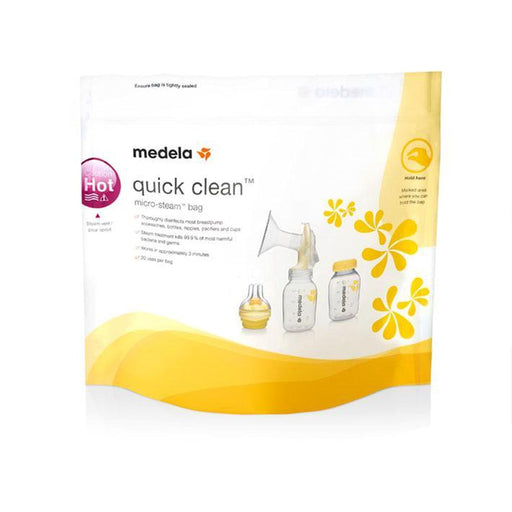Why sterilize baby bottles and their feeding equipment?
Sterilize all your baby's feeding equipment, including bottles and teats, until they're at least 12 months old.
This will protect your baby against ;
- Infections
- Diarrhoea
- Vomiting
Why is it so important to sterilize baby bottles?
Babies have immature immune systems so they aren't as good as older people at dealing with a range of infections. You can help reduce the chance of your baby getting sick by always using a sterilised bottle and clean equipment. Even if bottles and teats look clean, they might still carry germs.
What happens if I don't sterilize baby bottles?
Every parent should know that unsanitary baby bottles can pose harmful diseases to their newborns. Unclean baby bottles can be the home of various bacteria and germs that can make your babies sick.
What does Sterilising fluid do?
- Formulated to Kill 99.9% of germs
- No need to rinse baby bottle and equipment after soaking in the solution
- Use to sterilise all breastfeeding equipment and baby feeding accessories : breast pump parts, baby bottles, soothers, teething rings, small plastic toys, plastic cutlery, weaning bowls

A. Steps Before sterilizing
- Clean bottles, teats, and other feeding equipment in hot, soapy water as soon you can after use
- Use a clean bottle brush to clean bottles. (preferred is a dedicated brush for baby bottles)
- Use a small teat brush to clean the inside of the teat. You can also turn teats inside out and wash them in hot soapy water. Do not use salt to clean teats, as this can be dangerous for your baby.
- Rinse all your equipment in clean, cold running water before sterilizing.
B. Sterilizing baby feeding equipment
There are 3 primary ways to sterilize baby feeding equipment
- cold water sterilizing solution
- steam sterilizing
- boiling
1. Cold water sterilizing solution
- Follow the manufacturer's instructions.
- Leave feeding equipment in the diluted sterilizing solution for at least 30 minutes.
- Every 24 hours, replace the sterilizing solution.
- When placing the bottles or teats in the sterilizing solution, make sure there are no air bubbles trapped inside of them.
- You should find a cover, or design a way to keep the items submerged
2. Steam sterilizing (electric sterilizer or microwave)

3. Sterilizing by boiling
- Make sure the items you want to sterilize in this way are safe to boil.
- Boil the feeding equipment in a large pan of water for at least 10 minutes, ensuring it all stays under the surface.
- Set a timer to turn the heat off
- Regularly check that teats and bottles are not torn, cracked or damaged.
NB;Remember that teats tend to get damaged faster with this method.
C. After sterilizing
- If you can leave bottles and teats in the sterilizer or pan until you need them, that is the best.
- When you take them out, immediately put the teats and lids on the bottles.
- Wash and dry your hands before handling sterilized bottles or teats.
- If you can, use sterile tongs.
- Assemble the bottles on a clean, disinfected surface .

![Sterilizing Baby Bottles and feeding equipment Kenya [2024]](http://motherbabyshop.co.ke/cdn/shop/articles/Mother_Baby_Shopify_Blog_Cover_Images_4_e823c109-d079-4cab-b638-ccee410becc1_1800x1013_crop_center.png?v=1708962946)


Leave a comment